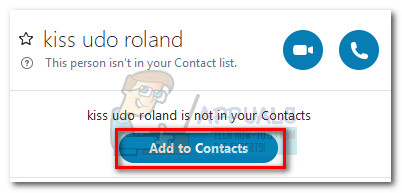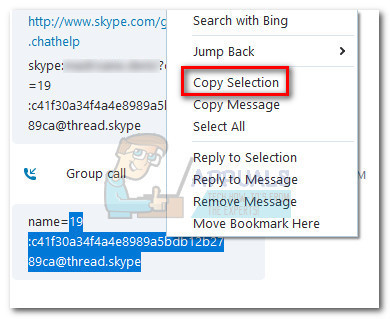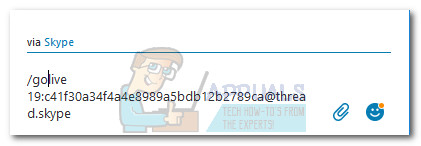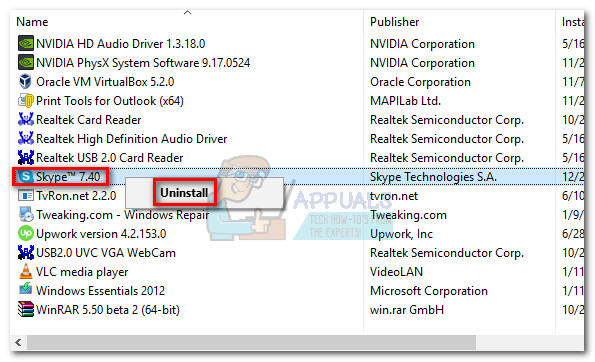Fix: Can’t join Skype call
Skype has an ongoing problem where some users are unable to join calls, particularly group calls. This can occur because the latest versions of Skype include changes that were supposed to improve video and group video calls. Unfortunately, these changes also created problems on older PCs that lack SSE2 (Streaming SIMD Extensions 2) support.

The most common symptom of this issue is when the call invitation shows up on the mobile version of Skype but nothing shows up on PC. The user can manually press the Join ongoing call button in the conversation window, but the conversation will automatically close within seconds without hearing any audio from the other participants.
Unfortunately, there isn’t much you can do if the issue is indeed caused by the lack of SSE2 support on your PC. However, keep in mind that this scenario is only applicable if you’re unable to join group video calls and your computer’s processor is older than 8-9 years. If you’re encountering this issue with regular audio calls or group calls, it’s likely that the problem is caused by a Skype glitch or due to the privacy settings of the call host.
If you’re currently struggling with this particular issue, troubleshoot for potential culprits using the potential fixes below. Please follow each method in order until you encounter a fix that works for your situation.
Method 1: Use the latest desktop version of Skype.
If you’re using Windows 10, you’re probably using the built-in Skype version. While this version is certainly more convenient, it’s not as streamlined as the desktop version of Skype and is known to cause a whole slew of unforeseen glitches.
Some users have been able to restore the normal functionality of Skype by avoiding the built-in version of Skype and installing the desktop version. To do this, visit Skype’s download page (here), click the drop-down menu under Download Skype and choose Get classic Skype.

Once the installer package is downloaded, open it and follow the on-screen prompts to install the desktop version of Skype on your system. To see if this has resolved any issues, try joining a call or a group call using the desktop version of Skype.
Method 2: Ask the call host to add you to their contacts.
This particular issue can also be related to a certain privacy setting of the person that is hosting the group call. To test this theory, see if the person that initiated the group call has added you to their contact list. If you aren’t in their contact list, ask them to add you manually and invite you again. They can do this easily by visiting your profile page and clicking on Add to Contacts.

If the issue was indeed related to a privacy setting on their part, adding you as a contact should automatically resolve the issue and you should be able to participate in the group call normally.
Method 3: Starting group call as host.
If Method 2 didn’t help you join the group call, let’s try having you act as the host to see if you’re able to stay in the group call. Some people have reported that, even though they were unable to join an active group call, they were able to speak with multiple people by creating the group call themselves.
This will not enable you to join a group call, but you’ll at least be able to communicate with multiple participants until Microsoft decides to fix this problem for everyone. To do this, go to Contacts and select Create New Group.

Then, hit the Add people icon and add all the people that you want participating in the group call. Once all the participants have been added to the group, click the Call Group icon to initiate a group call.

If the steps above are also leading to the same issue, follow Method 4 for a different way of joining a group call.
Method 4: Use the /golive command.
If all the methods above have been unsuccessful, let’s try a more technical approach. Some users have been successfully able to join an ongoing group call using the /golive command. Here’s a quick guide on how to do this:
- Access the group window of the conversation that you’re trying to join, type “get /name” into the chat bar and hit Enter.
 Select all text after “name=“, right-click on it and select Copy Selection to copy it to your clipboard. We are going to use it momentarily.
Select all text after “name=“, right-click on it and select Copy Selection to copy it to your clipboard. We are going to use it momentarily.

- Return to the chat bar at the bottom of the screen and type “/golive“, then paste the text that you previously copied to your clipboard.

- Hit Enter to join the ongoing group call.
If you’re still struggling with the same issue, follow the final method to downgrade your current Skype to a previous version.
Method 5: Downgrading to an older version.
If all the methods above have failed to allow you to join an ongoing group call, downgrading to an older version of Skype might just do the trick. If your issue has resulted from the glitch that has been going around starting with version 7.0.85.100, downgrading to an older version will solve your group calling problems. Here’s a step by step guide:
- Start by uninstalling your current version of Skype. Next, open a Run window by pressing the Windows key and ‘R‘ together. Then, type ‘appwiz.cpl‘ and press ‘Enter‘. This will open ‘Programs and Features‘.

- Scroll down through the programs list, right-click on the current version of Skype and choose Uninstall.

- Once Skype is uninstalled, visit this link (here) and download an older version, preferably one older than 7.0.85.100.

- Open the installer package and install the older version of Skype by following the on-screen prompts. See whether you’re able to join ongoing group calls while on the old version.
If you’ve exhausted all the methods without success, visit this Microsoft link (here) and open a support ticket for Skype. As of now, there are many unresolved tickets related to this particular issue. Following Microsoft’s logic in previous matters, the company is bound to release another hotfix once enough people report the problem with this new build.